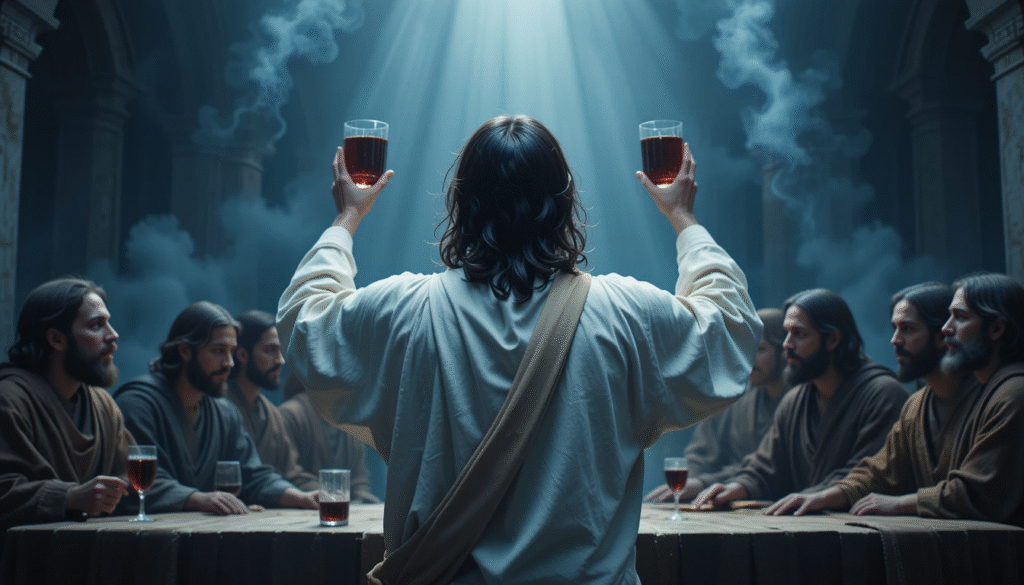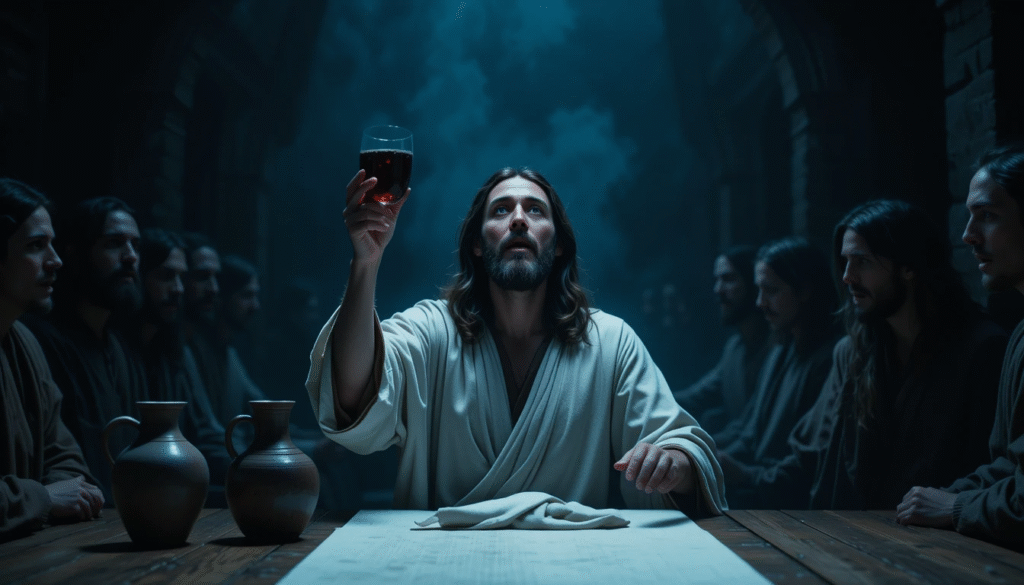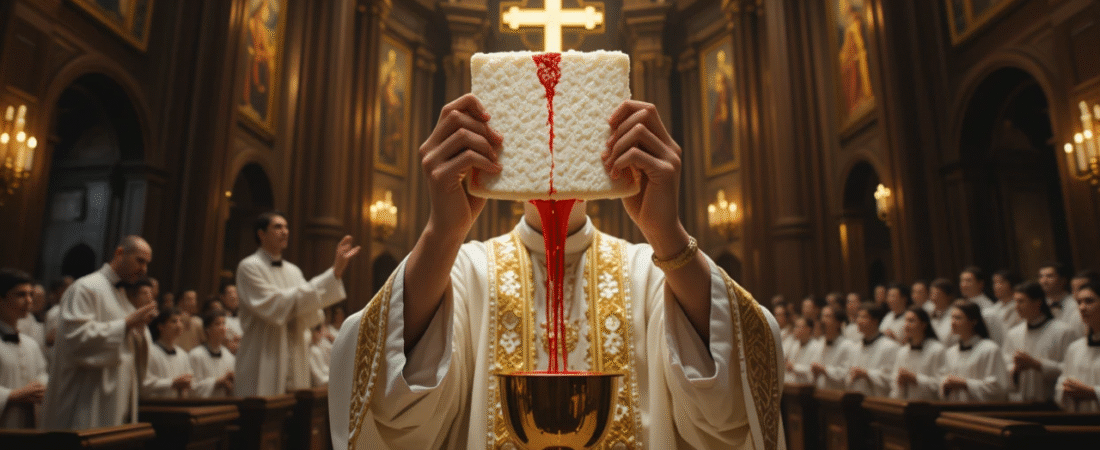On a quiet morning, something sacred begins. Streets fill with worshippers. The Host is lifted high for all to see. This is Corpus Christi—a feast that means “Body of Christ.” It is more than a celebration. It is a bold reminder that Jesus is truly present in the bread we share. Every step in the procession tells a story. Every prayer echoes a mystery. But where did this feast come from? Why do Christians around the world still celebrate it today? Dive into the meaning, history, and wonder of Corpus Christi. You might see the Body of Christ in a way you never have before.
What is Corpus Christi?
Corpus Christi is a Latin phrase that means “Body of Christ.” It refers to a special feast in the Christian calendar that honors the real presence of Jesus Christ in the Eucharist—what many Christians believe to be His actual body and blood, under the form of bread and wine. This celebration is not just symbolic. It is a public declaration of faith that Jesus is truly with us in the sacrament of the altar. The feast reminds the Church that Christ’s sacrifice is not forgotten—it is remembered, adored, and made present again at every Mass.
The origin of this feast goes back to the 13th century. Although Christians had always celebrated the Eucharist at Mass, Corpus Christi was established as a separate feast to focus solely on the real presence of Jesus in the Blessed Sacrament. It became official in 1264 when Pope Urban IV declared it a universal feast for the entire Church. Since then, Corpus Christi has been celebrated with processions, hymns, and acts of devotion, especially in Catholic and some Anglican communities. It offers believers a time to reflect on how Christ comes close to them in the most unexpected way—in a piece of bread.
This feast is not just for priests or theologians. It’s for every heart that longs for God. When people see the Host carried through the streets in a golden monstrance, they are reminded that Jesus walks with them, not only in churches but in everyday life. Corpus Christi is a moment to pause and recognize that the sacred is among us—humble, quiet, and full of love. It calls us to see Christ not only on the altar but in our neighbors, in our struggles, and in our joys.
Why do Christians celebrate it?
Christians celebrate Corpus Christi to honor the deep mystery of Jesus’ real presence in the Eucharist. The celebration is rooted in the words of Christ at the Last Supper: “This is my body, which is given for you” (Luke 22:19). These words are not poetry or metaphor. For many believers, they are literal and life-giving. Corpus Christi is a feast of remembrance, but also of encounter. It is a way of saying, “Jesus did not leave us alone. He gave us Himself to stay with us always.”
The feast also helps Christians reflect on the unity of the Body of Christ—not only in the Eucharist, but in the Church itself. As Paul writes in 1 Corinthians 10:17, “Because there is one bread, we who are many are one body, for we all partake of the one bread.” By receiving the Eucharist, believers are united with Christ and with each other. Corpus Christi brings this spiritual truth into visible form. Processions, prayers, and gatherings show that faith is not hidden—it is alive, shared, and celebrated in public.
Beyond the theology, Corpus Christi touches something very personal. It speaks to the longing in every soul for closeness with God. In a world that often feels loud and broken, this feast says, “God is still here.” He comes in the quiet in the bread. He comes not just to visit, but to dwell. That’s why Christians celebrate Corpus Christi—not just out of tradition, but out of deep love and holy awe.
When did the celebration of Corpus Christi begin?

The celebration of Corpus Christi began in the 13th century, inspired by a nun named Saint Juliana of Liège. She lived in Belgium and had a vision from God that called for a special feast to honor the Eucharist. Juliana saw the Church as a bright moon, but with one dark spot. The meaning was clear: something was missing—a feast that would bring special attention to the Body of Christ in the Eucharist. She shared this vision with priests, bishops, and eventually Pope Urban IV.
Pope Urban IV was moved by her vision and a Eucharistic miracle that happened in the Italian town of Bolsena around the same time. During Mass, a priest who doubted the real presence of Christ in the Eucharist saw blood dripping from the consecrated Host. This event, known as the Miracle of Bolsena, gave further confirmation that a feast was needed. In 1264, the pope established Corpus Christi as a universal celebration for the entire Church through the papal bull Transiturus de hoc mundo.
The first official Corpus Christi procession took place in the city of Liège, and the tradition quickly spread across Europe. Over the centuries, the feast became one of the most visually stunning and spiritually rich celebrations in the Christian world. From humble beginnings in a nun’s vision, Corpus Christi grew into a global expression of faith, uniting millions in the adoration of Christ’s living presence in the Eucharist.
How is Corpus Christi celebrated today?
Today, Corpus Christi is celebrated in many parts of the world with deep reverence and joyful devotion. The most common tradition is the Eucharistic procession, where the consecrated Host is placed in a monstrance and carried through the streets. People walk in prayer, sing hymns, and decorate the path with flowers, banners, and altars. These processions serve as a public witness of faith, showing that Christ is not hidden in church walls but walks with His people.
In addition to processions, many churches hold special Masses, times of adoration, and Eucharistic benedictions. Children often wear white, symbolizing purity, and may scatter flower petals along the procession route. Priests wear ornate vestments, and choirs sing ancient hymns like Pange Lingua and Tantum Ergo, written by St. Thomas Aquinas specifically for this feast. The atmosphere is filled with awe, joy, and a sense of the sacred made visible.
Even in places where large processions aren’t possible, the spirit of Corpus Christi lives on. Believers pause to reflect on the miracle of the Eucharist. Families attend Mass together. Communities unite in quiet adoration. The celebration reminds everyone that God doesn’t just visit the world—He remains in it. Through this feast, faith moves from the heart into the streets, proclaiming that Jesus is truly present, here and now.
What does Corpus Christi teach about the Eucharist?
Corpus Christi teaches that the Eucharist is not just a symbol—it is Christ Himself, given to us in love. Jesus said in John 6:51, “I am the living bread that came down from heaven. Whoever eats this bread will live forever.” These words reveal the heart of the Eucharist: God becomes food so that we may have life. The feast reminds us that in every Mass, we encounter the same Jesus who walked the earth, died on the cross, and rose again.
This teaching brings deep comfort and challenge. It comforts us to know that Christ is not distant. He is as close as the bread on our lips. But it also challenges us to approach the Eucharist with reverence, humility, and faith. As Paul warns in 1 Corinthians 11:27-29, those who receive the Body and Blood unworthily bring judgment upon themselves. Corpus Christi renews our focus on preparing our hearts before receiving this holy gift.
More than anything, the feast invites us into mystery. The Eucharist cannot be explained fully with human logic—it must be received in trust. Corpus Christi says, “Taste and see that the Lord is good” (Psalm 34:8). It calls us to kneel before a piece of bread and believe we are kneeling before a King. In that act of faith, heaven opens, and the soul finds rest in the true presence of Christ.
Why is it still important today?

In today’s fast-moving and distracted world, Corpus Christi offers a moment to slow down and remember what truly matters. It calls people back to the center of their faith: Jesus, truly present in the Eucharist. For many Christians, the feast acts like a reset—a spiritual pause button that invites deep reflection, renewal, and reverence. It reminds us that the sacred is not far away. It is near and real. And it is still with us.
The feast is also a powerful answer to doubt and division. In a time when many question what is true, Corpus Christi boldly proclaims: Christ is not a memory or a myth. He is alive and present, offering Himself at every altar around the world. The unity of the Church is found in this truth. As believers gather around the Eucharist, they become one body—stronger than culture, race, language, or background.
For the young, the old, the strong, and the broken, Corpus Christi is a reminder that no one is too far from God. The same Jesus who fed the crowds, touched the lepers, and rose from the dead is the same Jesus who waits in the tabernacle. This feast tells the world: God did not leave us. He is still feeding His people with the Bread of Heaven.
You can also read more about our well written biblical insights here 👇🏻:
Insights.
Also, get a hard copy of bible here.
